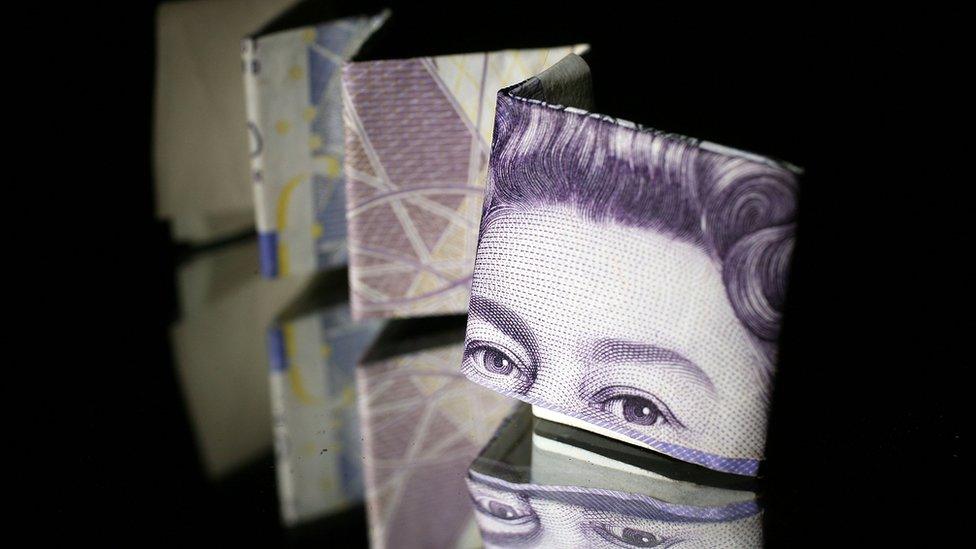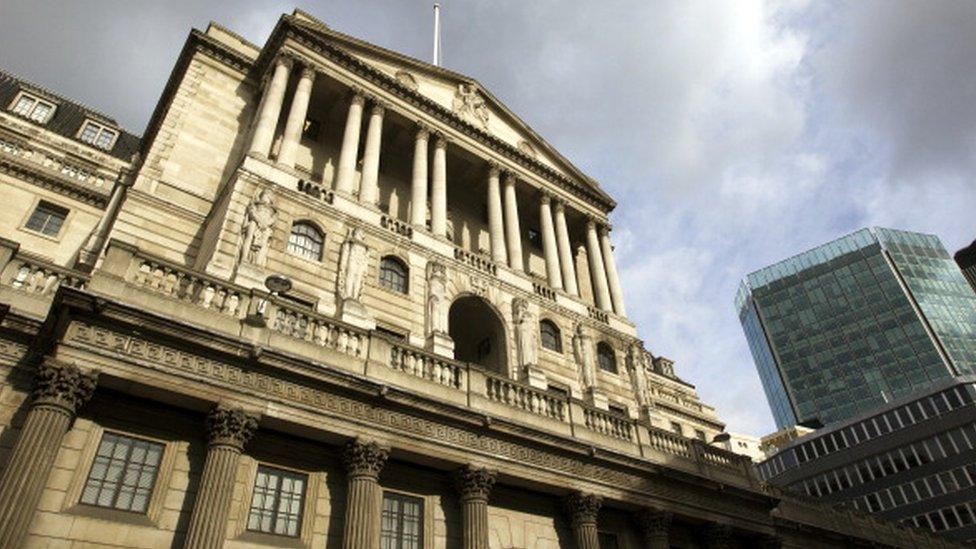Viewpoints: How low can the pound go?
- Published

A plunge in the value of the pound is not an overnight phenomenon and is only going to get worse, according to analysts.
Putting Friday's morning's "flash crash" aside, the pound has still fallen about 18% against the dollar since Britain voted to leave the European Union on 23 June.
This week alone it has fallen more than 4%, triggered by comments from Prime Minister Theresa May that she intends to begin the formal process of leaving the EU by next March.
While a weaker pound boosts exports by making UK goods cheaper for overseas buyers, it also makes imports more expensive for Britain.
Experts give their view on how far they expect it to fall.

Down and down
David Bloom, strategist at HSBC, forecasts that the pound could fall to $1.10 by the end of 2017 and sterling may hit parity against the euro. "The currency is now the de facto official opposition to the government's policies," he said.
Mr Bloom added: "The argument which is still presented to us, that the UK and EU will resolve their difference and come to an amicable deal, appears a little surreal.
"It is becoming clear that many European countries will come to the negotiation table looking for political damage limitation rather than economic damage limitation. A lose-lose situation is the inevitable outcome."

Gloom descends
John Wraith, head of UK rates strategy at UBS, predicts: "It is only a matter of time before less positive [economic] data starts to appear."
He expects the pound to reach parity with the euro by the end of next year - it last came close in late 2008.
Mr Wraith said: "When the global financial crisis entered its acute phase, sterling resumed its rapid decline, falling a further 20% by the end of 2008.
"Although different in its underlying causes, a similar pattern of decline, pause, and fresh falls may be unfolding now."
Mr Wraith forecasts sterling will hit $1.20 by the end of 2017.


Will the Bank of England cut rates in November?
A 'hard' Brexit
Bank of New York Mellon forecast a month ago that the pound will fall against the dollar to $1.10 by next August.
Neil Mellor, a currency strategist with Bank of New York Mellon, said: "We can dismiss what happened in Asia, but the bias for sterling's performance remains downward.
"The speech by [Prime Minister Theresa] May this week thrust the prospect of a 'hard' Brexit upon the market. The fact is that the bias to the downside is going to remain there until we see some details from the negotiating table."

Cutting rates
Alexandra Russell-Oliver, foreign exchange analyst at Caxton, estimates that the pound could head towards the $1.15 range by the end of 2017.
She predicted that the Bank of England could still decide to cut the interest rate again, putting pressure on the pound.
She said: "So far data has not been as negative as feared which lessened the expectation of the Bank of England acting. But there is still an expectation."
- Published1 July 2016